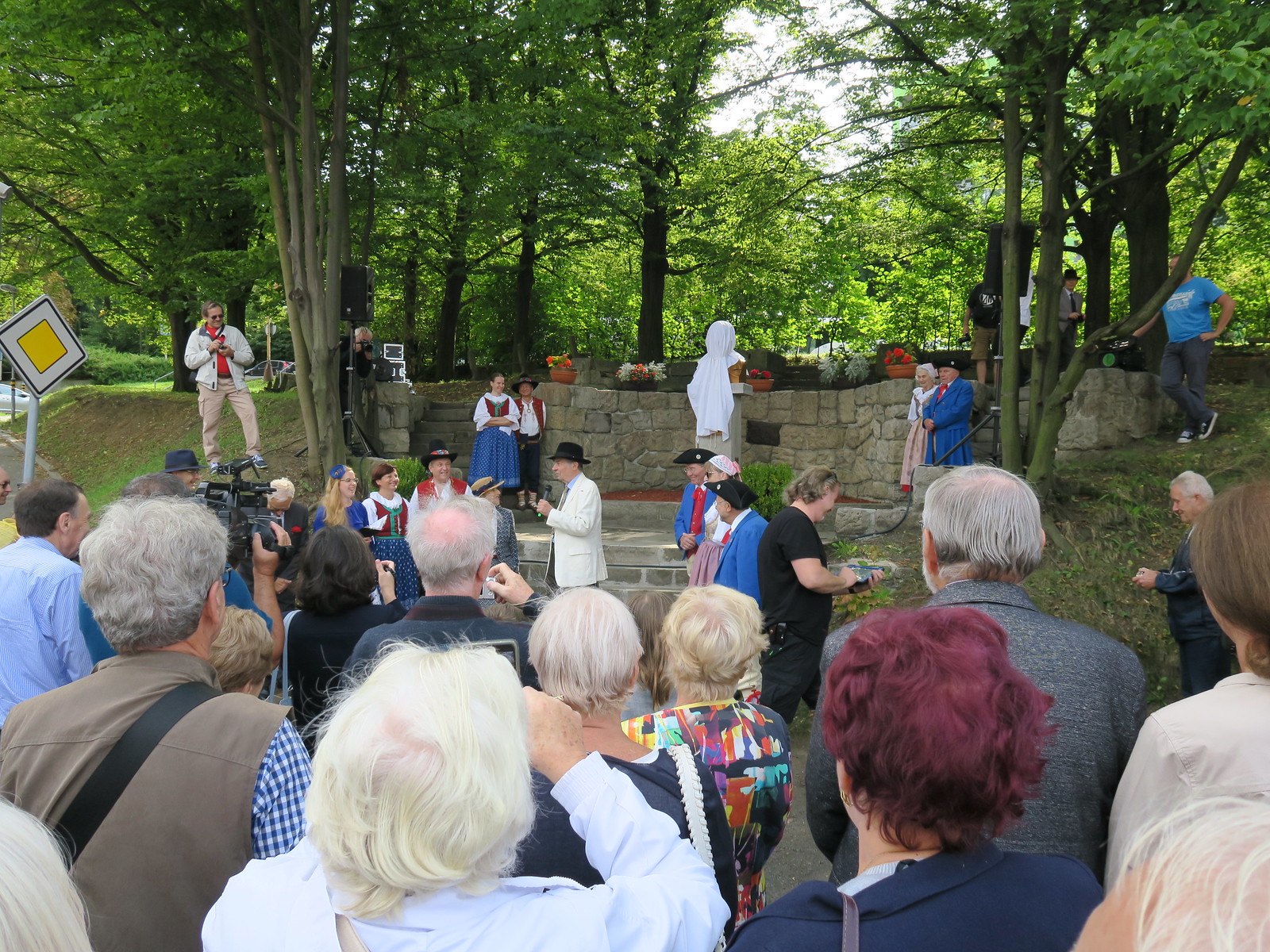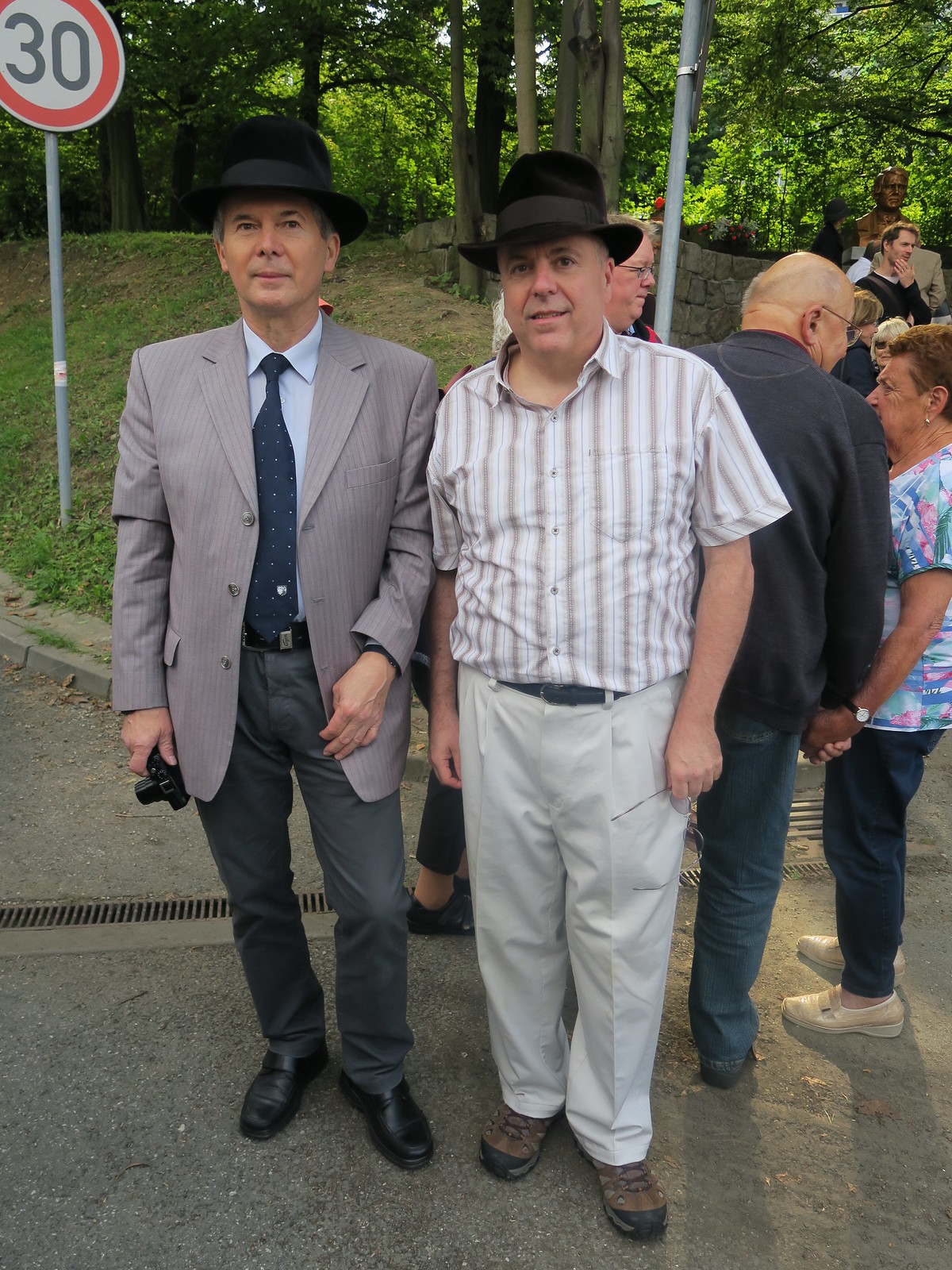- Messages
- 17,711
- Location
- Maryland
Legend TONAK: The oldest millinery in the world is 220 years old!


Nový Jičín made an indelible history as a "city of hats". Its hatter's history was written by Prokop Hatter, mentioned in the archival sources from 1506. Later, in 1630, a separate hatter's guild came into being here. from Würtzburg, Bavaria, which first settled in Fulnek in 1638 and operated a hat shop for 160 years.In 1799 Johann Nepomuk Hückel became a hat maker in Nový Jičín and laid the foundations of the oldest factory of its kind in the world.
Deed of acceptance of Johann Nepomuk Hückel into the hatter's guild. Photo: State District Archives
With steam to the top Johann Nepomuk Hückel ran his trade at first at the then Courierring (today's General Hlaď Street) in house number 749. Later in 1811 his brother Augustin (1786-1848) came to the town and joined into the local hat production. Both brothers had adjacent workshops at the Lower Gate number 16 and 18, which in 1848 Augustine's son Johann (1814-1880) merged into one production complex. After the return of his sons from hat making studies abroad, in 1865 he mechanized the production of a 3 horsepower steam engine. His workshop was the first mechanized millinery in the then Austria. The contribution of new technologies to production immediately increased demand. Therefore, in 1867 it was decided to purchase land on the southern side of the city and build a modern hat factory. Soon after the construction of the new factory, Johann Hückel employed 300 workers. In 1868, the company was newly registered as a trading company J. Hückel's Sohne. At the same time the brothers Augustin (1848-1917) and Johann (1843-1917) Hückel used all possibilities and means to develop the whole enterprise a few years later, in 1874, their factory became the largest in the city, and the next year their youngest brother Karl (1850-1919) joined as a partner. and Hückel's extensive production was awarded at many world exhibitions at the turn of the 19th and 20th centuries.
Drawing by Johann Hückel at Lower Gate. Photo: State District Archive Nový Jičín
View of the factory Johann Hückel's Reaches from 1895. Photo: Museum of Novojidín
Tradition continues
Only the First World War halted further development of the millinery production. After its end, in addition to the Viennese branch, plants were also established in Racibórz, Germany and Skočov, Poland. During the boom before the next world war, the company employed about 3,000 workers, masters and clerks. Nearly 1,000 different machines were driven by four steam boilers and a turbine with almost three wagons of coal a day. During World War II the company gradually switched to arms production. In 1941, Hückel's factory purchased the former Brüder Böhm factory from the German state. Like many other Nový Jičín families, the Hückels left for Germany and Austria at the end of the war. Subsequent nationalization and merger of all then Czechoslovak hatter's factories gave rise to the firm TONAK, a national enterprise. Today's TONAK joint stock company continues in the tradition of Nový Jičín and ranks among the oldest factories in the world with amazing 220 years of history. It exports its products to more than fifty countries around the world. This year's anniversary will commemorate not only the September festivities of the city, but also the first large publication mapping the hatter's history in our city. Radek Polách, Museum Novojičkiska


Nový Jičín made an indelible history as a "city of hats". Its hatter's history was written by Prokop Hatter, mentioned in the archival sources from 1506. Later, in 1630, a separate hatter's guild came into being here. from Würtzburg, Bavaria, which first settled in Fulnek in 1638 and operated a hat shop for 160 years.In 1799 Johann Nepomuk Hückel became a hat maker in Nový Jičín and laid the foundations of the oldest factory of its kind in the world.
Deed of acceptance of Johann Nepomuk Hückel into the hatter's guild. Photo: State District Archives
With steam to the top Johann Nepomuk Hückel ran his trade at first at the then Courierring (today's General Hlaď Street) in house number 749. Later in 1811 his brother Augustin (1786-1848) came to the town and joined into the local hat production. Both brothers had adjacent workshops at the Lower Gate number 16 and 18, which in 1848 Augustine's son Johann (1814-1880) merged into one production complex. After the return of his sons from hat making studies abroad, in 1865 he mechanized the production of a 3 horsepower steam engine. His workshop was the first mechanized millinery in the then Austria. The contribution of new technologies to production immediately increased demand. Therefore, in 1867 it was decided to purchase land on the southern side of the city and build a modern hat factory. Soon after the construction of the new factory, Johann Hückel employed 300 workers. In 1868, the company was newly registered as a trading company J. Hückel's Sohne. At the same time the brothers Augustin (1848-1917) and Johann (1843-1917) Hückel used all possibilities and means to develop the whole enterprise a few years later, in 1874, their factory became the largest in the city, and the next year their youngest brother Karl (1850-1919) joined as a partner. and Hückel's extensive production was awarded at many world exhibitions at the turn of the 19th and 20th centuries.
Drawing by Johann Hückel at Lower Gate. Photo: State District Archive Nový Jičín
View of the factory Johann Hückel's Reaches from 1895. Photo: Museum of Novojidín
Tradition continues
Only the First World War halted further development of the millinery production. After its end, in addition to the Viennese branch, plants were also established in Racibórz, Germany and Skočov, Poland. During the boom before the next world war, the company employed about 3,000 workers, masters and clerks. Nearly 1,000 different machines were driven by four steam boilers and a turbine with almost three wagons of coal a day. During World War II the company gradually switched to arms production. In 1941, Hückel's factory purchased the former Brüder Böhm factory from the German state. Like many other Nový Jičín families, the Hückels left for Germany and Austria at the end of the war. Subsequent nationalization and merger of all then Czechoslovak hatter's factories gave rise to the firm TONAK, a national enterprise. Today's TONAK joint stock company continues in the tradition of Nový Jičín and ranks among the oldest factories in the world with amazing 220 years of history. It exports its products to more than fifty countries around the world. This year's anniversary will commemorate not only the September festivities of the city, but also the first large publication mapping the hatter's history in our city. Radek Polách, Museum Novojičkiska
Last edited:



























































